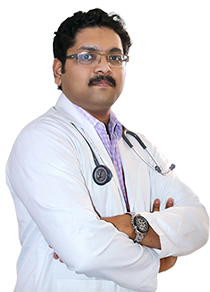Why is Pulmonary Rehabilitation Needed?
Pulmonary rehabilitation is of benefit for patients with a range of chronic pulmonary diseases. However, chronic obstructive pulmonary disease constitutes the substantial majority of such patients; most rehabilitation programs center on therapy for COPD patients. Exercise intolerance is often the chief complaint of COPD patients. Exercise intolerance roughly parallels disease severity but is also distinctly present in those with only mild disease. Although COPD primarily affects lung function, it often has extra-pulmonary manifestations. Principal among these is skeletal muscle dysfunction, especially in the leg muscles involved with ambulation. Importantly, muscle fatigue occurs at work rates that would not engender fatigue in healthy subjects. It has been demonstrated that, in an appreciable fraction of COPD patients, muscle fatigue rather than dyspnea is the primary factor limiting exercise tolerance. It is likely that the primary cause of these muscle abnormalities is deconditioning (COPD patients are often very sedentary), but other COPD-specific factors also contribute.
Pulmonary rehabilitation does not directly improve lung mechanics or gas exchange. Rather, it yields its benefits through optimizing function of other body systems so that the impact of lung dysfunction is minimized. High-intensity rehabilitative exercise programs improve muscle function, manifested by increased aerobic enzymes and structural adaptations. As a result, the onset of lactic acidosis is delayed. In patients in whom muscle dysfunction is a primary limitation, delayed fatigue directly enhances exercise tolerance. In patients in whom ventilatory limitation is primary, decreased lactic acidosis decreases ventilatory demand likely via decreased carotid body stimulation.
Dyspnea is also mitigated by reducing dynamic hyperinflation. Dynamic hyper-inflation results when exercise leads to demand for a high respiratory rate, and inadequate time is allowed for expiration in the face of limitation of expiratory airflow. Endexpiratory and, therefore, end-inspiratory lung volume is forced to increase progressively. When end-inspiratory lung volume approaches the limiting volume (total lung capacity), elastic work of breathing and dyspnea increase markedly. Exercise training lowers ventilatory demand, resulting in a slowing of respiration at a given level of exercise. A longer expiratory time yields less dynamic hyperinflation and, therefore, less dyspnea.
Pulmonary rehabilitation also works through other less well-defined mechanisms. Exercise programs often result in desensitization to dyspnea (a decrease in perception of dyspnea for a given task). In addition, rehabilitation programs typically incorporate education in the development of self-management strategies, an approach that involves a partnership between the patient and health professionals to systematically manage disease consequences. This promotes adaptive behaviors, such as smoking abstinence, better adherence with pharmacologic and exercise therapy, and earlier recognition and treatment of COPD exacerbations. Clinical trials examining benefits of pulmonary rehabilitation are relatively numerous. Demonstrations of benefit are based on randomized, controlled, (though unblinded) studies. For three outcomes, the benefit is unequivocal: exercise capacity, dyspnea, and health-related quality of life.
For these three outcomes, the magnitude of benefit is superior to any other COPD therapy. Moreover, pulmonary rehabilitation has been shown to decrease exacerbations, hospitalization and other measures of health care use, reduce depression and anxiety and improve cognitive function and self-efficacy.
Whether survival is improved is unclear, largely because randomized trials large enough and of sufficient duration to evaluate this outcome have yet to be performed.
What is Pulmonary Rehabilitation?
Pulmonary rehabilitation is delivered by a multidisciplinary team. A pulmonary physician usually serves as a medical director and provides oversight, but may or many not have day-to-day involvement. The rehabilitation team draws on nurses, physical therapists, occupational therapists, respiratory therapists, nutritionists, exercise physiologists and behavior modification professionals.
Rehabilitation programs can be organized as in-patient programs, out-patient programs (in rehabilitation centers, or in the community) or as home based programs. The choice of a program for an individual patient will be based upon the availability, reimbursement and patient preference.
Inpatient programs are generally more expensive compared to other settings. Hence, this treatment option seems only justified in a small subgroup of very severe patients, not able to leave the house. Multidisciplinary outpatient rehabilitation offer improvements in clinically relevant end points such as
